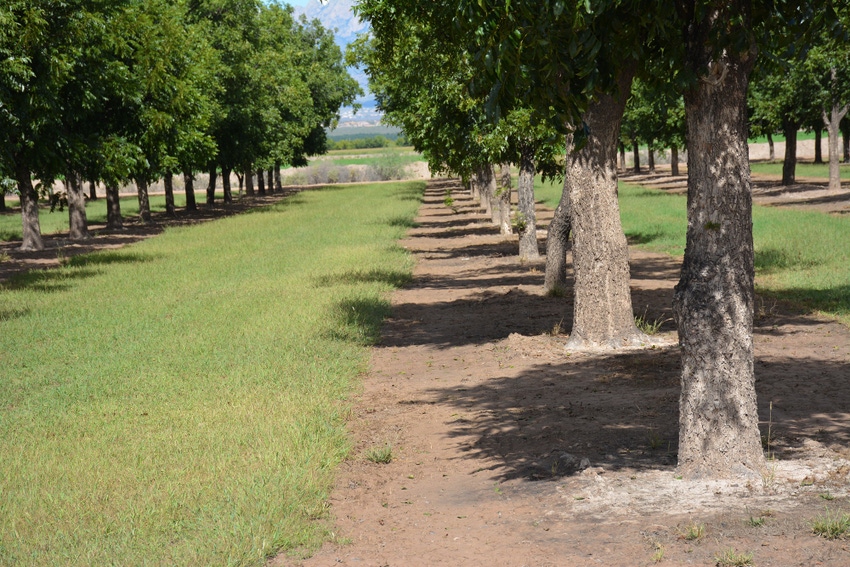
A high grade, carefully developed pecan variety has helped New Mexico nut growers make their mark on the pecan industry, with about 20 percent of the total U.S. Pecan crop produced within the state. The Mesilla Valley in Dona Ana County produces the bulk of New Mexico pecans; the state's southeastern counties, Chaves and Eddy in the Pecos River Valley, also produce significant pecan crops.
In recent years, New Mexico has surpassed Texas as the number two pecan production state, and for a brief period, in 2006, the state managed to out-produce even Georgia, the longtime top U.S. pecan producer.
New Mexico pecans are large, meaty and flavorful, and the industry has thrived in recent years with increased global exports to Chinese and Turkish markets.
But the New Mexico pecan industry is not without challenges.
Deadly drought conditions that escalated in 2011 caused tree loss to growers from Arizona to Texas. New Mexico pecan growers were forced to pump groundwater to sustain some orchards, a costly procedure, and many had to purchase water rights just to keep their orchards alive.
While drought conditions have improved, pest and disease pressures remain a constant challenge. This year, producers asked the New Mexico Department of Agriculture and the EPA for an emergency exception to use a restricted pesticide, sulfoxaflor, to protect their trees and their promising nut crop.
Producers say the more than $100 million state pecan industry could take a big hit this year if EPA denies the request.
But opposition to the measure has been building. Environmental groups, especially Environment America, a national conservation organization that launched a campaign and collected nearly 250,000 signatures—of which all but 7,000 signatures are from out-of-state residents—oppose the exception because they claim sulfoxaflor is a neonicotinoid-class pesticide tagged as harmful to honey bees and other pollinators.
Research, however, indicates that sulfoxaflor is not a neonicotinoid-class insecticide but rather a sulfoximine-class control agent, a newly developed type of insecticide.
According to Science Direct:
• Sulfoxaflor (SFX) is a sulfoximine insecticide with a distinct mode of action (MoA).
• SFX is not a neonicotinoid – different chemistry and structure activity relationships.
• SFX is highly active on neonicotinoid resistant insects.
• Differences in metabolism may explain the lack of cross-resistance for SFX.
• Aspects of SFX MoA may also factor in the lack of cross-resistance to neonicotinoids.
“Sulfoximines, as exemplified by sulfoxaflor represent a new class of insecticides. Sulfoxaflor exhibits a high degree of efficacy against a wide range of sap-feeding insects, including those resistant to neonicotinoids and other insecticides. Sulfoxaflor is an agonist at insect nicotinic acetylcholine receptors (nAChRs) and functions in a manner distinct from other insecticides. The sulfoximines also exhibit structure activity relationships (SAR) that are different from other nAChR agonists such as the neonicotinoids,"according to the technical journal.
ACTIVE OPPOSITION
While the issue remains unsettled as of this writing, both farm groups and environmentalists are encouraging supporters and/or those opposed to the request to make public comment before the EPA comment period expires Aug. 9 (2016).
New Mexico Department of Agriculture officials say pecan production represents one of the most significant agricultural crops in the state. The U.S. Department of Agriculture reports that in the 2014 season an estimated 70 million pounds of pecans were harvested across 40,000 acres, generating $141 million in domestic and international sales.
For the latest on southwest agriculture, please check out Southwest Farm Press Daily and receive the latest news right to your inbox.
While the state's pecan industry experienced notable growth during the early and middle part of the last decade, in recent years not only have drought conditions taxed producers but swarms of aphids that have become resistant to many pesticides have created havoc. Some producers have filed bankruptcy because of these and other challenges the last several years, and many say another serious swarm of aphids this year could force more out of business.
Without the right pesticides, they argue aphids are capable of leaching sap from the leaves of the trees and injecting an enzyme that can cause trees to produce fewer, lighter and dried-out pecans and can even destroy a crop before it fully develops.
Sulfoxaflor is one of a few pesticides that have worked well in managing aphid infestations, but since a California Federal Court action that removed the chemical from the EPA registration list, producers must now depend on a use exception before it can be applied to orchards again.
Opponents to the exception say research indicates pesticides in general and especially neonicotinoid-class pesticides have been instrumental in the decline of pollinator populations in recent years and as such represent a major threat to the environment.
PRODUCERS NEED ALTERNATIVES
While producers admit that other pesticides can be effective against the aphids, the insects are adaptive and can quickly build up an immunity to chemicals. Having more types or classes of pesticides available for use is the best way to manage the buildup of insect infestations, they say.
New Mexico is the most recent state to petition EPA for an emergency exception use of sulfoxaflor on crops including alfalfa, cotton and grain sorghum--all three crops are grown within the state. So far, EPA has granted a number of exceptions for use and has even proposed reregistering the chemical with additional use restrictions designed to protect pollinators.
In the meantime, New Mexico pecan producers are hoping enough supporters will make public comment before the Aug. 9 deadline to help save the industry from the threat of swarming aphids.
About the Author(s)
You May Also Like




